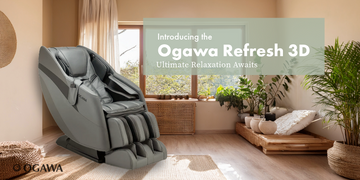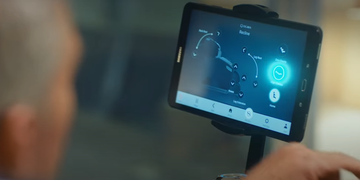Exercise, physical activity, and playing sports are all good for you, but sometimes they lead to injuries. These injuries may be accidents, the result of improper equipment, or inadequate training to push so hard. Sports injuries are broadly categorized into two types: acute and chronic. But what distinguishes acute and chronic sports injuries from one another? How can you treat each type?
Today, we’re looking at what distinguishes acute and chronic sports injuries to help you find the path to recovery as quickly as possible. When it comes to recovering from sports injuries, proper treatment is crucial to regaining full range of motion without losing progress.
As with any kind of injury, however, always consult a medical professional before beginning any form of treatment to ensure it’s safe to do so.
DIFFERENCES BETWEEN ACUTE AND CHRONIC SPORTS INJURIES
Sports injuries are broken down into two main categories: acute and chronic. What distinguishes acute and chronic sports injuries from one another? It’s all in the definition of each.
Acute sports injuries are injuries that occur suddenly and most often are the result of a trauma of some kind such as broken bone, torn muscle, or abrasions. They’re commonly accompanied by instant pain that can be debilitating. Acute sports injuries are those that are most often caused by accidents like colliding with another player, rolling an ankle while running, or pulling a back muscle while golfing during a backswing. Symptoms of acute sports injuries tend to be:
- Sudden or severe pain
- Immediate swelling
- Extreme tenderness or inability to bear weight
- Reduced range of motion
- Visible joint dislocation
Chronic sports injuries, on the other hand, are the results of prolonged repetitive motions causing bodily damage during physical activity. These kinds of repetitive motion injuries tend to stem from overuse or improper technique. Signs of a chronic sports injuries include:
- Pain when performing a physical activity
- Aching when at rest
- Swelling of the affected area
COMMON ACUTE AND CHRONIC SPORTS INJURIES
Now that you’ve got a better understanding of what distinguishes acute and chronic sports injuries, let’s take a look at a few examples of each.
Because acute sports injuries are sudden and often the result of accidents, they can often seem a little more drastic than chronic injuries. Some of the most common acute sports injuries are conditions like:
- Broken bones
- Torn cartilage
- Pulled muscles
- Bruising
- Scrapes and scratches
Conversely, chronic sports injuries develop over time from misuse or overuse, yielding injuries that are sometimes less visible, but painful all the same. Some common chronic sports injury examples include:
- Tennis elbow
- Stress fractures
- Heel inflammation
- Shin splints
- Runner's knee
TREATING ACUTE AND CHRONIC SPORTS INJURIES
Learning what distinguishes acute and chronic sports injuries is important when it comes to treating them. While it’s important to consult a medical professional before beginning any kind of treatment for an injury, there are some home remedies that may help you on your path to recovery. Some of these methods include:
- The R.I.C.E. method
- Using a massage chair at home
- Keeping active within limitations
The R.I.C.E. Method for Sports Injury Recovery
Most commonly used to help treat acute sports injuries, the R.I.C.E. method is a sort of gold standard for injuries like sprains or pulled muscles. Treating sports injuries immediately is a key part in how to make an injury recover faster, reduce pain, and control any inflammation that may occur. The acronym R.I.C.E stands for:
- Rest
- Ice
- Compression
- Elevation
When it comes to chronic sports injuries, you can still apply parts of the R.I.C.E. method (specifically Rest and Ice), though the latter two may or may not work quite as well. Depending on the type of chronic sports injury you’re experiencing, however, the entire method may be effective for you.
Using a Massage Chair for Sports Injuries
Sports injury massage can play a role in treating and recovering from both acute and chronic sports injuries. Making an immediate appointment, however, doesn’t always work out when you need it to. This brings many athletes to turn to the benefits of massage therapy at home.
One of the biggest massage chair benefits for athletes with treating acute and chronic sports injuries is how massage keeps your muscles loose and works out sore spots from injured muscles or limbs. Massage chair features like heat therapy also help enhance the benefits of massage chairs for health by increasing the efficiency of blood flow throughout the body. Better circulation delivers oxygen and nutrient-rich blood to damaged tissue, facilitating faster bodily healing.
Today’s luxury massage chair models offer a wide variety of features, designs, and price points to choose from. They provide many different types of massage programs including sports massage favorites such as kneading, effleurage, and deep tissue massage benefits. Choosing between a 3D vs 4D massage chair gives athletes the opportunity to pick how much control they want over their massage rollers, as well.
Unlike the models of decades past, today’s full body massage chair models use amazing technology to effectively eliminate the difference between using a massage chair vs human massage. For example, there are AI massage chairs that use two types of body scanning technology to deliver a massage experience tailored to your body’s needs each time! Zero gravity massage chairs further enhance the healing benefits of massage by alleviating pressure on the lower back and distributing weight along the body for faster recovery, as well.
Keeping Active Within Limitations
While it may not be the first thing that comes to your mind when distinguishing between acute and chronic sports injuries (and how to treat them), keeping active within your injured limitations can often be helpful, too. This can be any kind of physical activity from getting up and stretching to increase mobility and flexibility, taking a walk to get the blood pumping, or even doing a light workout to keep your muscles loosened up. The most important part of being active while injured is that you respect your limitations to avoid injuring yourself any further.
As you have learned, what distinguishes acute and chronic sports injuries is primarily determined by their causes. Instant injuries sustained during activities are most often acute sports injuries while chronic sports injuries tend to develop over time. Whether it’s using the R.I.C.E. method, choosing a massage chair to use at home, staying active while injured, or any other form of treatment, we know that getting back on your feet and onto the field is your top priority. Be sure to consult a medical professional before beginning any kind of treatment, but once you’ve got the green light, try these methods out and see what works best for you!
Want to learn more about the benefits of owning a massage chair at home? Check out these resources:





